Mirror and Water Image for Design Exams: Concepts, Important Questions & Answers
Mirror and Water Image questions are frequently asked in the Design DAT Examinations, including the entrance examinations conducted by reputed design universities in India. This article will explore concepts like lateral inversion, vertical inversion, visualization techniques, and symmetrical concepts for the mirror and water image. Once the fundamentals are cleared, these are two great Scoring Areas for any aspirant. Read the complete article for knowledge on how to solve mirror and water image questions for exams like NID (National Institute of Design) and UCEED (Undergraduate Common Entrance Examination for Design).
This Story also Contains
- Mirror Image
- Water Image
- Difference between Mirror and Water Image

Mirror Image
Mirror Image: When an observer looks at an object in a mirror, it is called a mirror image. In this case, the original object has been inverted so that the left side is on the right side and the right side is on the left.
Horizontal and Vertical Mirrors:
It is well-known that vertical and horizontal mirrors show images in very different manners. For one, vertical mirrors, or reflections in a vertical plane, as the name suggests, flip the object about a vertical axis. Similarly, horizontal edges reflect images in a horizontal manner. Both are indispensable and need to be remembered for better result-driven problem solving.
Complex Shapes and Mirror Symmetry:
Working with complex shapes necessitates some understanding of mirror symmetry. An asymmetric object is one that has at least one distinct feature which does not relate to the other half of the shape. These shapes demand focused analysis on the plane of symmetry for the generation of their mirrored counterparts.
Handling Letters & Alphanumeric Characters:
Some characters in alphanumeric texts can be termed as semi–symmetric, whereby they may have particular mirror images as does the letter “P” or “Q”. Others such as “A” and “H” are completely symmetrical. They often appear identical after reversal. Knowledge of these facts assists greatly in the speedy identification of mirror images for the letters.
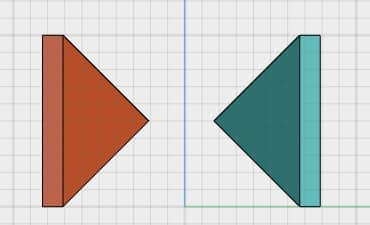
Original Image Mirror Image
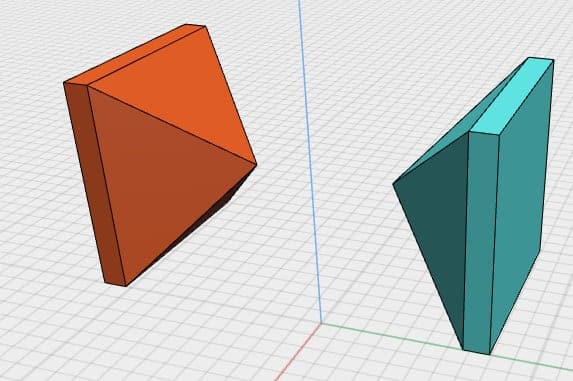
Original Image Mirror Image
Points to Note
When we talk about mirror images, we consider the flat version of the mirror unless it is mentioned in the question.
The size of the object reflected never changes. Neither does it become bigger or smaller in the mirror image.
The object reflected as seen in glass is the same without any shift or divergence from the original form.
Sample Question
For the image on the left, find the correct mirror image using the given options.

Solution Approach:
Step 01: For most DAT examinations, never settle for the right option; rather, it is advised to adopt the “Elimination” approach, rejecting the options that are fundamentally wrong to reach the right option.
Step 02: The diagonal line is wrongly aligned in option C, eliminating option C. In option B, the indicated lines are parallel but not in question; the mentioned lines are not parallel, thus eliminating option B, as shown in the figure.

Step 03: Now, comparing options A & D itself , we see the inner square and the lines in the pattern inside the smaller square in option D are the same as the question which is not possible. Thus, the only option is left, and on cross-checking, we find that option (A) is correct.
You can refer to the below articles:
Water Image
When an observer looks at an object in water, the inverted form visible for the object is called a water image. Appearing as a vertically inverted version of the object, it shows symmetry along the horizontal axis (waterline)
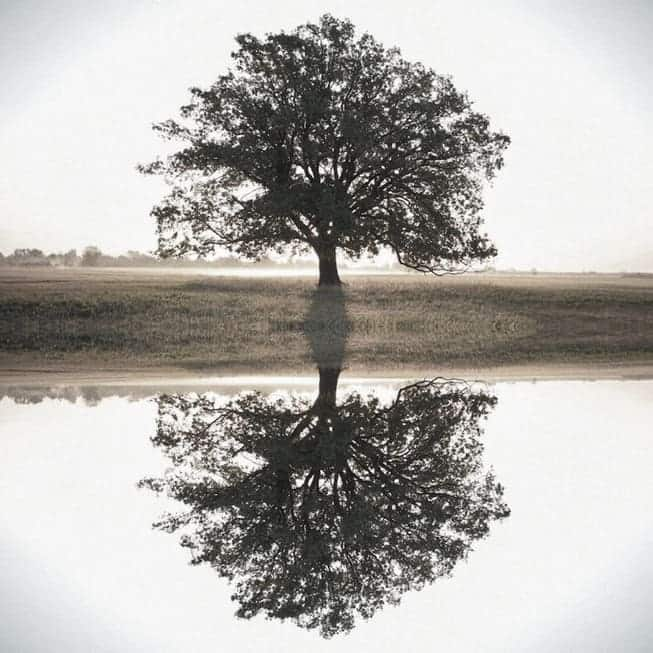
Note: When we talk about water images, we consider the stand-still state of the water with no disturbance or discontinuity on the water surface.
Reflections in Curved Surfaces:
let’s analyze how objects that have curved surfaces such as spheres or cylinders reflect images in water. Their surfaces result in circular or semi-circular reflection. Such reflection behaves in a unique manner when compared with flat objects and the nature of sphere or cylindrical shapes should be well understood to clearly.
Challenges with Detailed Patterns:
With curve sophisticated shapes that exhibit exquisite detailing, an advanced methodology should be deployed. The solution would require considerable effort to recognize correct image coordinates over water which could be resolved through systematic element flipping and aligning.
Real-world Examples:
Visualizing boats and trees in various water bodies can provide immense clarity while dealing with water images. Such visualizations help picture better how objects are rotated upside down with respect to the horizontal axis
Aligning for Symmetry:
While ensuring that the object and its reflected image are symmetrical and balanced along the waterline, the distance from any point on the object to water line can equally pair to the reflection would maintain symmetry and accurate identification to any given point on the reflection.
Key points to understand
Reflection Symmetry: Water images show a reflection of the object, similar to a mirror placed horizontally at the waterline.
Vertical Inversion: The reflection is an inverted version of the object along the horizontal axis (upside down).
Perspective and Depth: Objects closer to the water surface appear larger and more detailed in their reflection, while those farther away appear smaller and less detailed.
How to identify the Water Image?
Check if the object appears flipped upside down along the horizontal axis (waterline). For example, "2" should resemble a reversed "S" below the waterline.
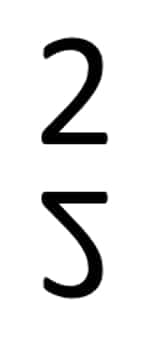
Ensure that the original object and its reflection are symmetrical relative to the waterline. The distance from any point on the object to the waterline should be equal to the distance from the corresponding point on the reflection to the waterline.
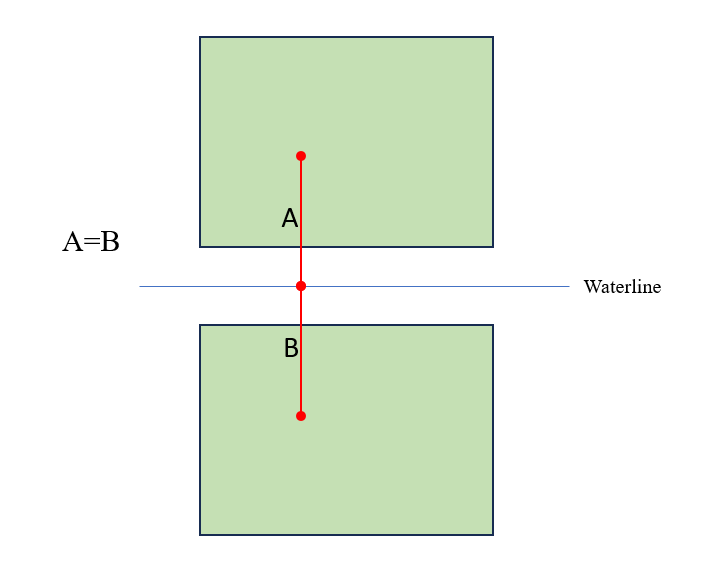
Verify that the reflected image maintains the exact proportions and alignment as the original object. For example, if the original object is a triangle pointing upwards, the reflection should be a triangle pointing downwards, maintaining the same base width and height.
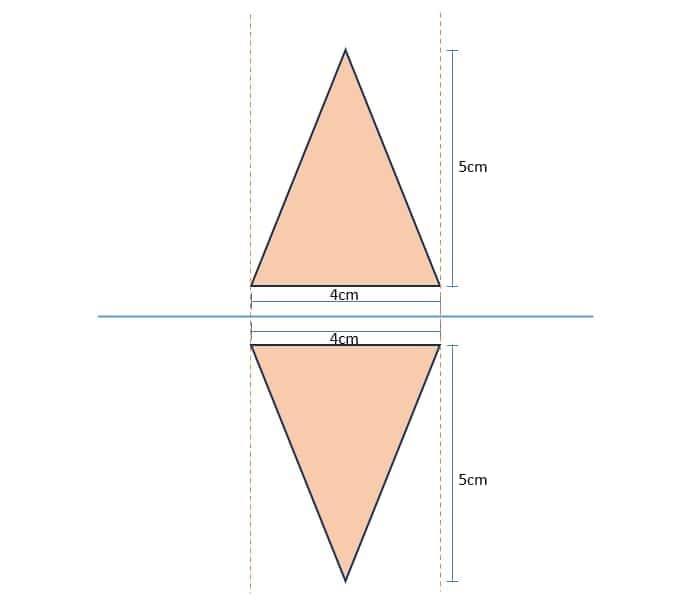
Sample Question:
Choose the correct water image of the question figure from the given answer figures (assume that water is along XY)
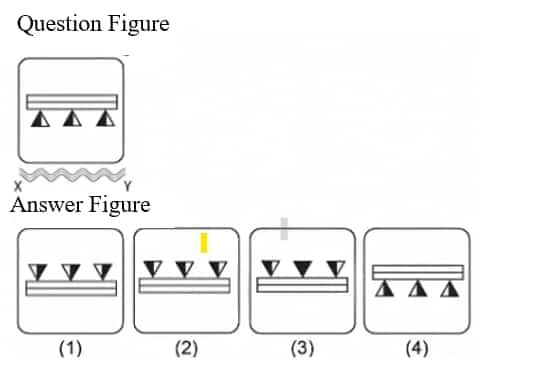
Approach to Solution:
Step 01: We'll start by eliminating the option/s which are different from the question. Just like option (3), which comprises an element-middle black triangle, which is different from the middle triangle present in question and option (4), in which the image is as it is, only the black-shaded region is mirrored. Also, the whole part is not inverted.
Step 02: This leaves us with two options (1) and (2). We will compare the shaded black region with the question because the rest is the same. On comparing, we can see that the black shaded region is mirrored in option (1), it should be on the same side only just below.
Step 03: That can be seen in option (2). The correct answer is option (2).
Difference between Mirror and Water Image
Mirror image and water image are a part of the visual and spatial reasoning section, where students need to identify how objects appear when reflected. The primary difference lies in the axis of reflection.
- A mirror image is formed with respect to a vertical axis, meaning it shows a left-right reversal. For example, when you look at yourself in a mirror, your right hand appears as the left hand in the reflection.
- On the other hand, a water image is formed with respect to a horizontal axis, resulting in a top-bottom reversal, just like seeing your reflection in a calm pond or lake. Here, the top part of the object appears at the bottom and vice versa.
How to approach:
- Flips of the object in the problem statement is visualized in the mind as part of the preparation process by students for design entrance exams.
- A useful technique is to visualize folding the figure: fold along a horizontal line to obtain the water image, then fold along a vertical line to obtain the mirror image.
- Making a reference sheet of letters and numbers with their reflections in a mirror and water facilitates quicker recognition on tests.
Practice Questions: Mirror Image
Given below are practice questions students must refer to for preparation.
Question 01: For a given image (alphanumeric code), find the correct option for the mirror image formed.


Solution:
To find the mirror image of the alphanumeric code 5G7NPQ4 placed in front of a vertical mirror (MN):
Mirror images reverse left and right.
The sequence will appear flipped horizontally.
Original: 5 G 7 N P Q 4 will make Mirror image: 4 Q P N 7 G 5
Therefore, Option A will be the correct option here.
Practice Questions: Water Image
Given below are practice questions students must refer to for preparation.
Question 01: Choose the correct option that resembles the given combination's water image.

Solution:
A water image is a vertical inversion (flipped upside down along the X-axis).
Top becomes bottom, and bottom becomes top.
Left-right orientation remains the same.
Original: A 1 M 3 b
Water image (upside down): b 3 M 1 A
Therefore, Option A will be the correct option here.
Question 02: Choose the correct water image of the question figure from the given answer figures (assume that water is along XY)
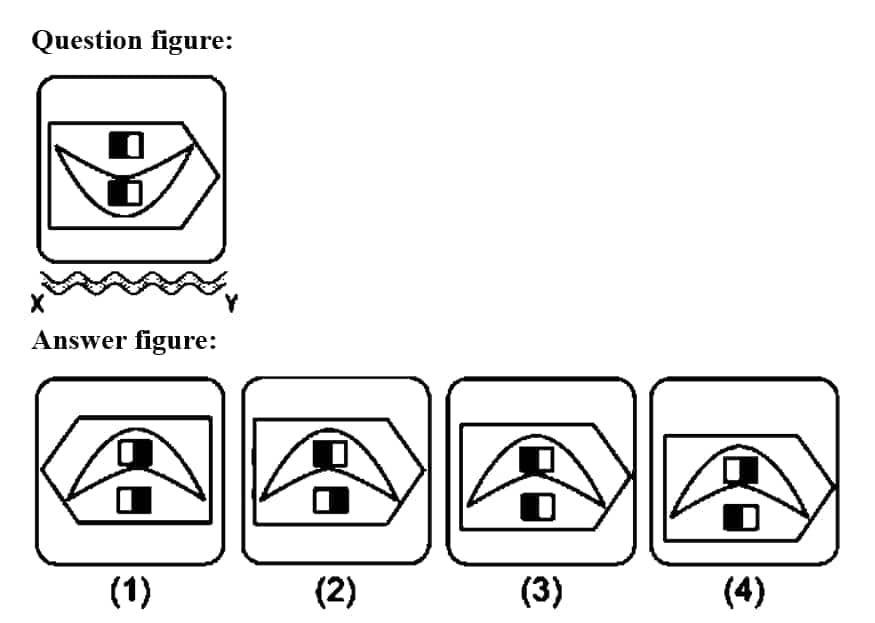
Solution:
- The water image will be a vertical reflection across the XY line.
- The top triangular part will move to the bottom, maintaining left-right orientation.
- The small black rectangle will also move downward accordingly.
Comparing options visually:
Option (2) correctly shows the figure flipped vertically (like a reflection in water).
Frequently Asked Questions (FAQs)
Mirror Image: When an observer looks at an object in a mirror, it is called a mirror image. In this case, the original object has been inverted so that the left side is on the right side and the right side is on the left.
Water Image: When an observer looks at an object in water, the inverted form visible for the object is called a water image. Appearing as a vertically inverted version of the object, it shows symmetry along the horizontal axis (waterline)
In the mirror image, the original object has been inverted so that the left side is on the right side and the right side is on the left. Whereas in the Water image, Appearing as a vertically inverted version of the object, it shows symmetry along the horizontal axis (waterline).
Check if the object appears flipped upside down along the horizontal axis (waterline). Ensure that the original object and its reflection are symmetrical relative to the waterline. Verify that the reflected image maintains the exact proportions and alignment as the original object.
In the mirror image, the original object has been inverted so that the left side is on the right side and the right side is on the left.
The size of the object reflected never changes. Neither does it become bigger or smaller in the mirror image.